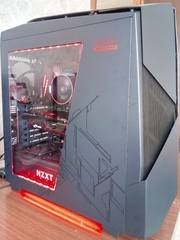usb USB KILLER ||| HTTP KILLER ||| Some other medium KILLER
42 minutes ago, mariushm said:HTTP is a network protocol, one of many.
You use Ethernet cards to transfer the data packets from your computer to router and then to the internet.
Ethernet ports are less sensitive compared to USB because Ethernet was designed from the start to work with long cables (up to 105 meters), which could be pick up erroneous signals and electricity. Imagine network cable between two buildings and a lightning strike hits a few meters from the building - the cable could pick electricity like an antenna even though each wire of the 8 wires inside the cable is insulated
So because of this, the design require use of isolation transformers for each pair of wires - the card is never connected directly to the wires from the cable.
That's what that black rectangle on the card by the connector is, four tiny isolation transformers in a sealed box... the card below in picture has 4 such rectangles, one for each port :
On some motherboards, that rectangle is hidden inside the metal case that holds the connector on the back of the motherboard.
So if you try to "fry" the connector like you would with USB, in worst case scenario you'd only damage the transformer by melting the wire insulation inside or breaking the wire. The Ethernet chip and motherboard would be safe. Sure, network would stop working, but you could plug a new Ethernet card and disable old card, or just replace the transformer if you have soldering skills
USB can be damaged like that because such safety measures weren't thought of .. USB was meant to connect peripherals to PC at up to 3 meters or so, therefore in controlled environments (inside house etc)
I have a lot to learn. Thank you Marius! Thank you for taking the time to properly answer this topic/query.
Please note: I am not trying to blow things up around here or anywhere for that matter. This question/query relates to the technical side of being able to "fry" something using a port.
If I understand you correctly, then being able to run some kind of software on a network would in theory be able to fry all nic's/wireless on that network? If so, this seems like a huge security issue.
Thanks again for the details, it makes sense. ![]()



.jpg.5cc14cacf0bfa9d58de316927a37ec08.jpg)














Create an account or sign in to comment
You need to be a member in order to leave a comment
Create an account
Sign up for a new account in our community. It's easy!
Register a new accountSign in
Already have an account? Sign in here.
Sign In Now